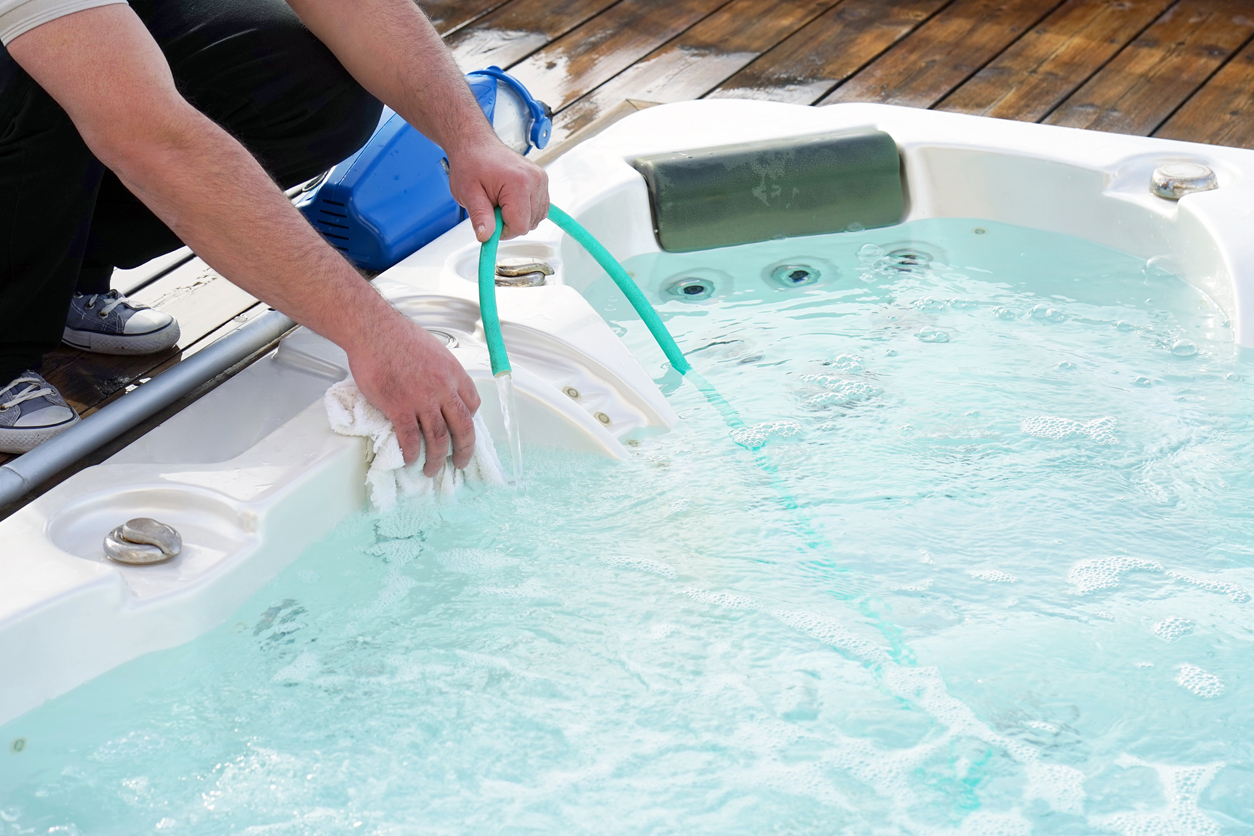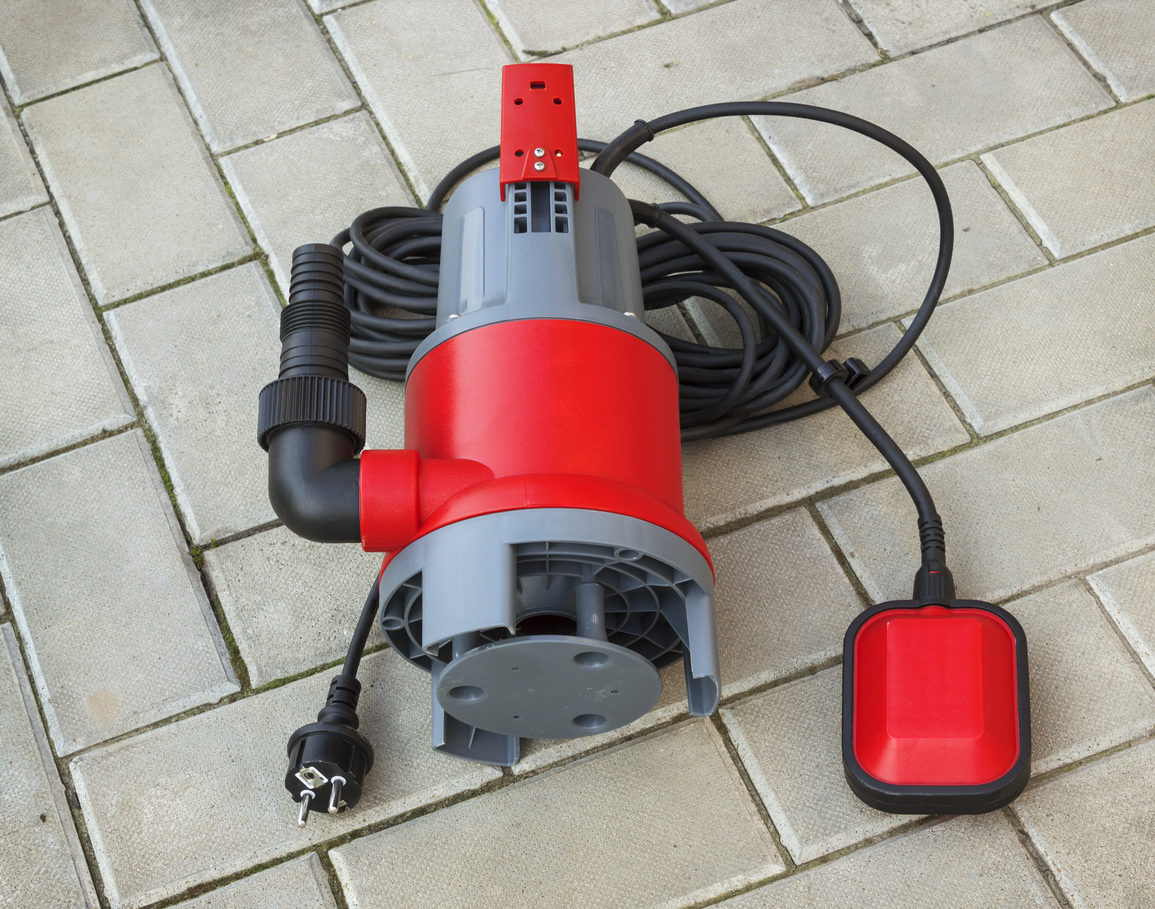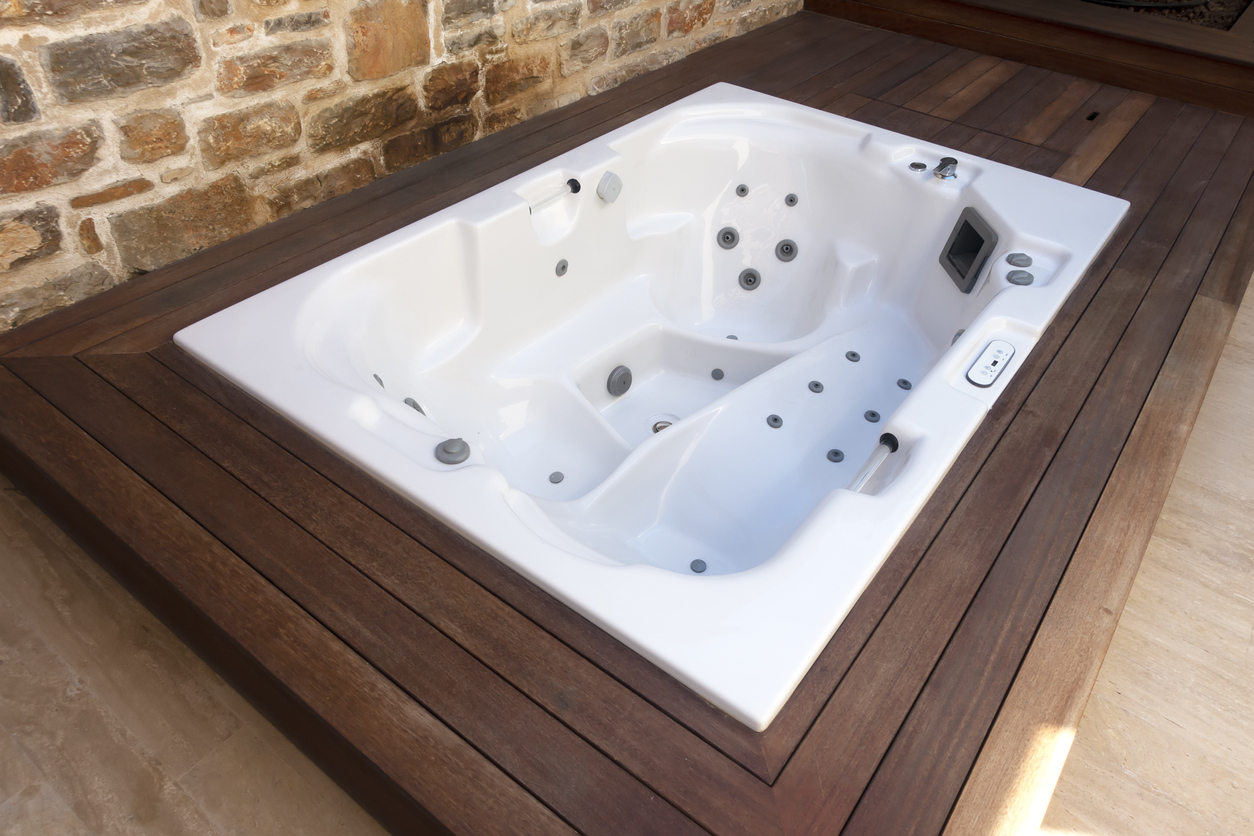We may earn revenue from the products available on this page and participate in affiliate programs. Learn More ›
Hot tubs are often a treasured luxury for when you just want to take some time to rest and relax aching muscles, but they also need care in order to keep working. Just like a pool, a hot tub needs to be properly maintained in order to keep both the water and tub clean and enjoyable.
Learning how to drain and clean a hot tub isn’t a difficult process, but some may struggle with getting started, including figuring out where the drain plug is on a hot tub. However, once you find the drain plug and know how to open the drain valve, draining a hot tub becomes a simple maintenance task that can be completed without much effort.
When you are learning how to drain a hot tub, it’s important to pay attention to the type of drain valve so that you understand how the valve opens and closes. Otherwise, you could be in for some frustration as you try to rotate, pull, and push the drain valve in an attempt to start the draining process.
Keep reading to learn how to drain a hot tub properly.
Tools & Materials
Bobvila.com may earn a commission from purchases made through these links.
BEFORE YOU BEGIN
If you plan to drain a hot tub, then it’s a good time to also flush the plumbing lines, so you can remove all built-up dirt and grime at the same time. While the following are general steps for most hot tubs, make sure to check the user manual and manufacturer’s information for precise steps on completing this process if you have never flushed the plumbing lines.
- Take out the hot tub filters and turn the jets on full pressure.
- Pour a pipe cleaning solution into the filter housing and let the jets run for about 15 to 30 minutes to remove any biofilm or bacteria that may have built up in the pipes.
How to Drain a Hot Tub Using the Drain Valve

The simplest way to empty a hot tub is to learn how to drain a hot tub with a hose. By connecting a garden hose directly to the hot tub drain valve, you can direct the water to a nearby drain and prevent flooding on your patio or in your garden. Follow these straightforward steps to complete this maintenance task.
STEP 1: Locate and remove the valve cap.
Make sure that the power is off to the hot tub by completely unplugging the tub or turning off the circuit breaker for hardwired hot tub setups. The power needs to be disconnected because the pumps and jets can become damaged if they are used when there isn’t any water in the hot tub.
With the tub turned off, search for the valve cap. The valve cap for the drainage valve is usually located on the side of the hot tub, near the base. Its position allows the valve to drain water from the lowest point within the tub. Look for a black, grey, or sometimes white valve cap and pull it out to reveal the drainage valve.
Some hot tubs have a hollow enclosure where the drainage valve and other important components can be kept out of sight. If that’s the case for your hot tub, you will need to move the panel that is preventing access to the valve.
STEP 2: Identify the type of drain valve and connect a garden hose.
Inspect the drain valve to determine how it works before proceeding. Some drain valves operate with a standard ball valve lever that just needs to be turned 90 degrees to open or close the drain. These are the easiest to identify and use, but there are several other types of hot tub drain valves. There are valves that open by rotating the valve and pulling it out to drain the water and valves that need to be pulled all the way out to connect the drainage hose, then pushed halfway back in to start the flow of water.
If you aren’t certain how your drainage valve works, check the user manual and consult the manufacturer’s website for instructions. Once you have located and identified the drainage valve, connect a garden hose to the valve and run the garden hose to a nearby drain.
There is enough water that comes out of a typical hot tub to damage the grass or plants in a garden, and it could even dislodge soil or stones that are currently supporting the patio. In addition, the chemical content of the water can also damage the soil and vegetation, so it’s important to find an appropriate place for the water to drain.
STEP 3: Open the valve to drain the hot tub.
The garden hose will redirect the water from the hot tub to the desired location, so all that’s left to do is open the drainage valve and allow the water to begin draining from the tub. If there is a handle or lever on the drain valve, turn it so that it’s in the open position and wait for the tub to finish draining.
The draining process can take up to 2 hours, but you don’t need to supervise if it is properly set up. Just make sure the hose is actually draining to the correction location, then check back periodically, and at least after 1 to 2 hours.
How to Drain a Hot Tub with a Submersible Pump

Draining a hot tub through the drain valve can take up to 2 hours. If you don’t have the time to wait, then consider using a submersible pump to drain the hot tub in just a few minutes.
STEP 1: Turn the power off and connect the pump.
Unplug the hot tub or turn off the circuit breaker to prevent the hot tub from being turned on accidentally while you work. This is to ensure that the jets and hot tub pump are not active when the tub is empty, as this can cause damage to the components.
Plug in your submersible pump and connect a drainage hose that can quickly and effectively move the water from the hot tub to an appropriate drainage location away from the garden, patio, and home. A submersible pump drainage hose is a specialized type of hose that is designed to work with a submersible pump.
STEP 2: Run the hose to a suitable drainage location.
The drainage hose from the pump needs to be run to a location where the chlorinated water will not damage the surrounding vegetation or create erosion problems in the soil, due to a high volume of water. A good idea is to run the hose to a sanitary sewer drain so that the dirty water is carried to the sewage treatment plant.
Alternately, if the pH level of the water is relatively close to neutral (7) then the water can be drained into the lawn without damaging the grass, though other plants may be more sensitive to the chemicals than grass, so it’s advised to avoid draining the hot tub into the garden. Also, do not drain the hot tub into the storm drain because these drains flow directly into local streams and rivers.
STEP 3: Drain the hot tub.
Place the submersible pump into the deepest part of the hot tub and turn it on to begin pumping water out of the tub. Check to make sure that the water is draining to the correct location and keep a close eye on the pump so that you know when to turn it off. If the pump keeps pumping after all of the water has been removed, it can get damaged and stop working. However, a pump that has a float switch will automatically turn off when the water reaches a specified level.
After the water has been pumped out of the tub, turn off and unplug the pump, remove it from the hot tub, and disconnect the drainage hose. Allow the pump and hose to dry before storing them safely in a shed or garage.
Routinely drain the hot tub for cleaning and maintenance.

Draining a hot tub may seem like a time-consuming process. Some may even attempt to avoid this task by maintaining the water chemistry and keeping the tub covered when it’s not in use.
However, every time the hot tub is used, dirt, oil, skin, and hair come off of the users and remain in the hot tub. This organic debris builds up on the sides, bottom, and even inside the jets of the hot tub, creating a layer of grime that continues to increase with every use.
To ensure that you aren’t relaxing in a dirty hot tub, it’s advised to drain, clean, and refill the tub at least once every 3 to 4 months. The frequency depends on how often the hot tub is used and the number of people that regularly use the hot tub.


